Jobs often have a work schedule that determines how employees spend their daily time. Work schedules include how many hours the employee will work during a week, day, or at certain times associated with their shifts, such as morning, afternoon, evening, and overnight. The schedule also specifies the days of the week an employee will be working and their off days.
Work schedules are essential to any organization because they help ensure that employees focus on their goals and that everyone is appropriately compensated for the amount of work they are doing. They are typically created by the person overseeing the plans for the project or group of projects.
This article has discussed various topics to guide you when creating one. The topics are:
- The definition of a work schedule
- Features of a work schedule
- Why it is important
- Types
- How to create it
- Best practices to adopt
What is a Work Schedule?
A schedule is a rigid, predetermined set of hours an employee must work. An employer usually gives one that consists of the number of hours and the days the employees need to work. They are a way for employees to organize their time and ensure they are productive. They can also help employees focus on their work and avoid distractions.
Also, a work schedule can impact an employee’s duties, payment, benefits, and state and federal law requirements. This is because it stipulates when, where, and how they will work, how they will be compensated, and the various laws of working schedules.
There are various ways you can create these for your employees. You can choose one that suits your organizational needs, objectives, and culture. For example, you can create one for the IT department that provides technical support in a 24-hour rotating shift.
Features of a Work Schedule
An effective work schedule for employees is an essential aspect of a company. An effective one ensures staffing is done appropriately.
Below are its features explained:
Free of errors
An effective work schedule needs to be free of errors. The most common errors are:
- Double scheduling an employee: Double scheduling an employee means that a particular employee is assigned to do two jobs simultaneously. This should be avoided, as it causes poor performance in both positions.
- Scheduling staff for the wrong position: Scheduling an employee for a position they are not used to can cause delays and misuse of company resources.
- Under or over-scheduling employees: Avoid giving too many shifts to part-time employees. Part-time employees may have non-work commitments that cannot be overlooked. On the other hand, full-time employees may need enough shifts to meet their financial obligations. However, avoid giving an employee too many shifts in any given week.
Staff appropriately
Another feature is that it should ensure that each shift is staffed appropriately. For example, if there are morning shifts, ensure that the employees scheduled for this shift are the best for that time of day. This will ensure that the schedule is optimized for the best results for your organization.
tip
Work schedules are usually included in the job posting or explained during an interview. However, employees should check with the employer before accepting a job offer if they are unsure of their working hours. Even if the position is full-time or part-time, an employee should ask what the weekly schedule looks like in terms of hours and days.
Importance of a Work Schedule
Work schedules are essential for both employees and employers. They ensure that an organization runs efficiently. There are various benefits of having one.
They are the following:
Saves time
Employees find it easier to stay organized with it. If something unexpected comes up, the time will still be available to accommodate it.
Ensures legal compliance
Employees who are not scheduled correctly may face challenges like not receiving all the necessary breaks, resulting in legal consequences for the employer. In addition, by scheduling employees in advance, businesses ensure that they comply with federal and state wage and hour rules.
Establishes consistency
Employees and employers will know what to expect daily with a clear, consistent schedule. If you consistently schedule your employees’ workdays around the same hours, it will provide consistency in the workplace and ease communication between employees and managers.
Determines labor costs
Employers and employees will know precisely how many hours will be needed to complete each task. Therefore, you can better understand the labor costs of staffing each position to avoid overspending.
Increases customer satisfaction
A work schedule enables employees to provide better customer service because they will know when they are scheduled to work. In addition, creating a schedule that allows employees enough time to work and rest is beneficial. As a result, employees’ job performance will also improve, resulting in customer satisfaction.
Boosts creativity
Employees who know their working hours perform their duties positively and become more productive. This allows them to be more creative.
Types of Work Schedule
There are various types that you can choose from according to your company’s objectives. The type you choose should be beneficial to your company and employees.
They are:
Standard work schedule
This is the most common type. It is also known as a 9–5 schedule, where employees work from 9 a.m. to 5 p.m. Employees prefer this schedule since they know they will work from 9 to 5, enabling easier daily planning.
Full-time work schedule
Most employees work a full-time schedule, which means they are employed for at least 35 hours per week. However, sometimes workers may work more than 40 hours per week. The National Labor Relations Board (NLRB) defines full-time employment as at least 35 hours per week. In addition, most full-time schedules come with benefits such as health insurance, sick days, etc. This is because employees are required to work long hours and, therefore, are eligible for breaks and benefits.
Part-time work schedule
With a part-time job, employees can typically work fewer hours per week than a full-time job but still earn a salary. In addition, part-time jobs allow employees to get extra time for their personal lives. However, unlike the full-time schedule, part-time work does not come with benefits, and working hours may differ from week to week.
Fixed work schedule
A fixed work schedule is in which employees work for fixed hours each day, week, or month. Fixed working hours tend to remain consistent once employers and employees agree on hours and days. For example, from Wednesday to Saturday, 10 a.m. to 4 p.m.
Shift work schedule
Shift work schedules are used when a company operates 24 hours a day. Shifts usually begin from 7 a.m. to 3 p.m., 3 p.m. to 11 p.m., and end with the last shift from 11 p.m. to 7 a.m. Employees in such companies usually work irregular hours. However, most employees prefer to work normally from 9 a.m. to 5 p.m.
Freelance work schedule
A freelance schedule is primarily used for short-term projects. This type of schedule is used when hiring contractors who will be paid upon completion of a project and not employees who are paid hourly.
Unpredictable work schedule
An irregular work schedule is in which the hours vary but the type of work remains the same. For example, employees could work from 6 a.m. to 4 p.m. Monday through Thursday, 4 p.m. to 2 p.m. Friday, and 10 a.m. to 8 p.m. Saturday and Sunday.
Seasonal schedule
Seasonal work schedules are only used for a few months in a year. The summer months (June–August) and holidays (November–December). This means that businesses need to hire additional staff to work during these months.
Alternate schedule
An alternate work schedule refers to various scheduling options that replace the standard schedule. Alternate working schedules help employees balance workplace demands and personal responsibilities. In addition, it is used to make up for the time lost by an employee through time off, such as during pregnancy.
Overtime schedule
An overtime work schedule is one in which an employee works more hours than the company’s standard work-hour limit. Employees who work overtime are paid a higher salary than employees who work within a company’s standard working hours. Employees are sometimes required to work overtime if a pending project needs to be completed soon. Employers tend to avoid overtime as it is very costly. However, they could ask a few employees to work a few overtime hours to maintain the costs.
No set schedule
With no set schedule, there is no need to worry about how many hours employees put in for each stage. This scheduling method is more about getting work done as efficiently as possible. On a no-set schedule, employees decide when to work. However, they must work in an office, unlike freelance work, where they can work from anywhere.
Rotating work schedule
A rotating schedule is used when employees are needed for multiple shifts. This schedule is a great way to avoid fatigue and improve productivity. For example, some employees can work during the day, and others work early morning or evening shifts.
Split-shift work schedule
This type divides an employee’s shift into two parts. As a result, a company can do more in less time by splitting the work into two or more shifts. For example, an employee could work from 9 to 11 a.m., clock out, and return to work from 5 to 7 p.m.
On-call work schedule
On-call schedules are usually used by companies when they have to deal with an emergency or natural disaster. Your employees are available when you need them. They usually continue to work their regular shifts and answer calls even after they leave the office.
Flex-time work schedule
A flex-time schedule defines “core hours” when employees should be available in the office or online (for example, 9:00 AM to 1:00 PM). Outside of these core hours, teams can work according to their schedules.
Annualized hours
This schedule outlines an employee’s hours in a given year. Weekly core hours are also incorporated into this type. For example, IT teams can put in extra hours in the weeks leading up to a big launch and work less the next.
Hybrid schedule
A hybrid schedule combines remote and office work. This allows employees to work from home some days and from the office some days. With this type of schedule, employees do not always have to be in the office.
A compressed schedule
A compressed work schedule is one in which employees work more hours than the regular hours in a week to have an extra day off. For example, if a company requires its employees to work 36 hours a week, they can work 9 hours a day for four days and have three days free.
How to Create a Work Schedule
Creating a work schedule can be challenging, but with the right tools and knowledge, it can be done quickly and efficiently. The steps below will help in creating a custom one that works for you and your employees:
Identify requirements and resources
Determine the amount of work your employees will do and what resources they need. Then, check your project budget to see how many hours you can pay an employee or contractor each week and if shifts will be required. This will prevent overbudgeting for situations such as overtime that were not planned for.
Anticipate the demands
It is essential to anticipate your demands to stay ahead of the ever-changing schedule. This will enable you to plan your day well and limit last-minute rushing. If you know a certain amount of work will be required, create a schedule so the employees can finish it as required. You can also create a schedule to anticipate holidays and local events and make predictions on staffing needs.
Enlist the requirements for each shift
You should also list the requirements for each shift to ensure you get the work done on time. For example, you might need more staff during the week than on a Saturday, so perhaps you need someone available then. You must review the shift schedule with the employees to ensure everything is fine. It is also crucial to get them to agree to it and understand what they will be doing during each shift. An example of a requirement can be if employees are required to have a leader during shifts or if they will work independently.
When listing the requirements, consider the following:
- Will the employees be allowed to swap shifts? If yes, what is the process?
- How will time-off requests be managed?
- How flexible will the scheduling be?
- What type of schedule will be most effective?
Collect employee preferences
Employees are always looking for ways to save time and reduce stress at work. By collecting employee preferences, you can create a schedule that is both efficient and effective. One way to manage employee preferences is through a questionnaire. The questionnaire can be customized to ask about the employees’ preferred work hours, days off, vacation scheduling, etc. Another way to collect employee preferences is through surveys. This type of survey can be sent out periodically (e.g., once per month).
Review past schedules
The schedules you created in the past can help you make more informed scheduling decisions for future projects. Review past projects to identify any scheduling problems incurred while completing tasks. Afterward, devise a corrective action plan to ensure you develop a more practical employee working schedule.
Make your schedule
After taking all the above steps, you must create a schedule that is easy to understand. Identify everything you need for the project and all available resources. After that, include information in the schedule according to the type you have chosen. However, when making one for employees, remember to include the following:
- The employee names
- Working hours and dates
- The employee’s duties
- The working location, i.e., remotely or in the office
Account for changes
Another essential thing to do is to account for changes. Accounting for changes will ensure that day-to-day business operations run smoothly. It will be best to account for the changes: sick leave, planned time off, and backup availability. So, you should plan what will happen concerning replacements and notices.
After you have finished your work schedule, share it with your employees. Ensure your employees receive and understand the information they need to complete their tasks. They will know what hours they are expected to work, when their breaks are, and how long each shift is expected to take and they can make arrangements for their schedule accordingly. You can create and share it with employees using Excel sheets or other project management software.
When deciding on a tool to share the schedule, consider a tool with the following characteristics:
- Employees can access an updated schedule
- Employees can share notes in real time
- Employees can update their availability
- Your employee work schedule can be visualized with various project views, e.g., a calendar.
tip
You should be aware of the federal and state laws regarding employment in your area to keep up with any changes and regulations and avoid paying expensive fines.
Work Schedule Templates
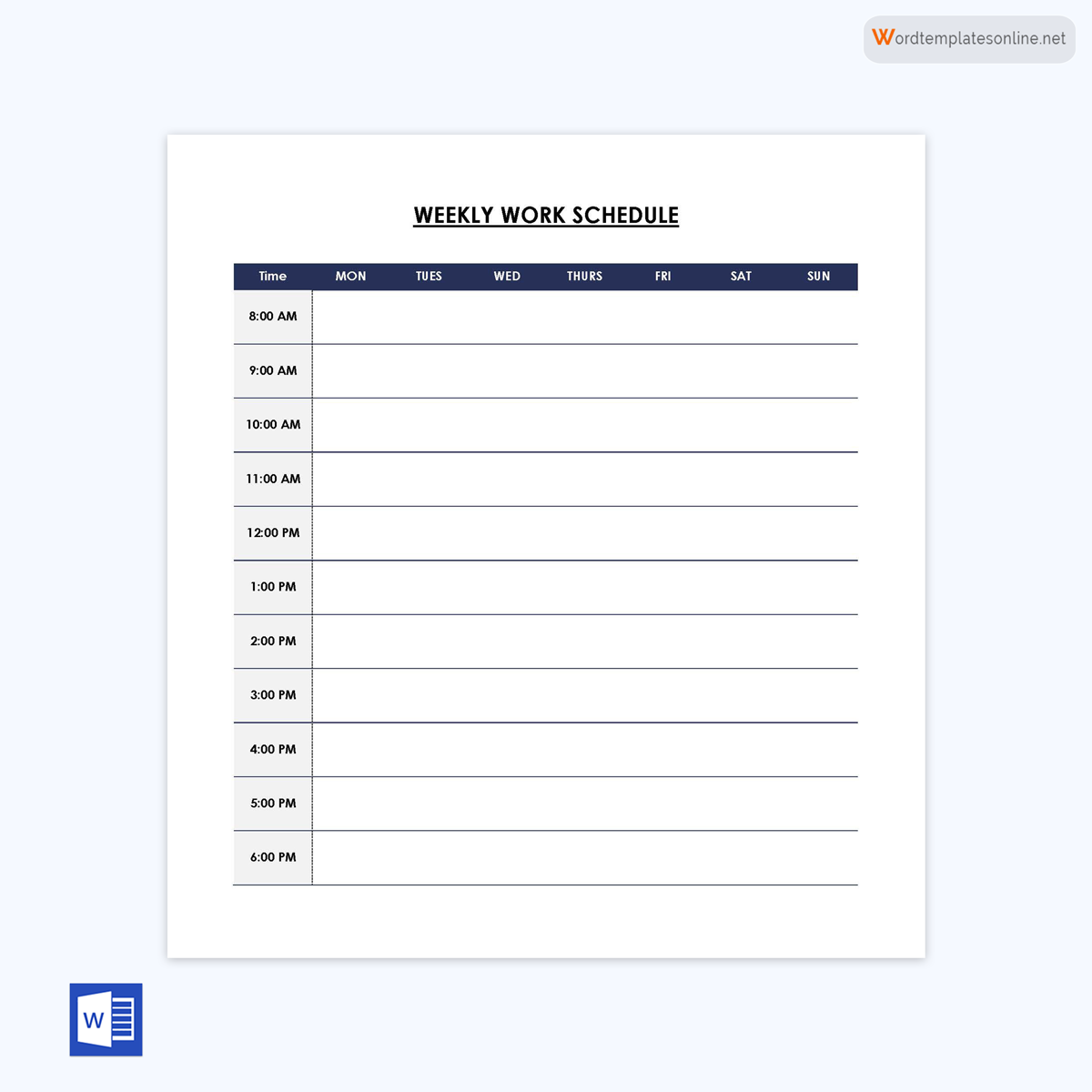
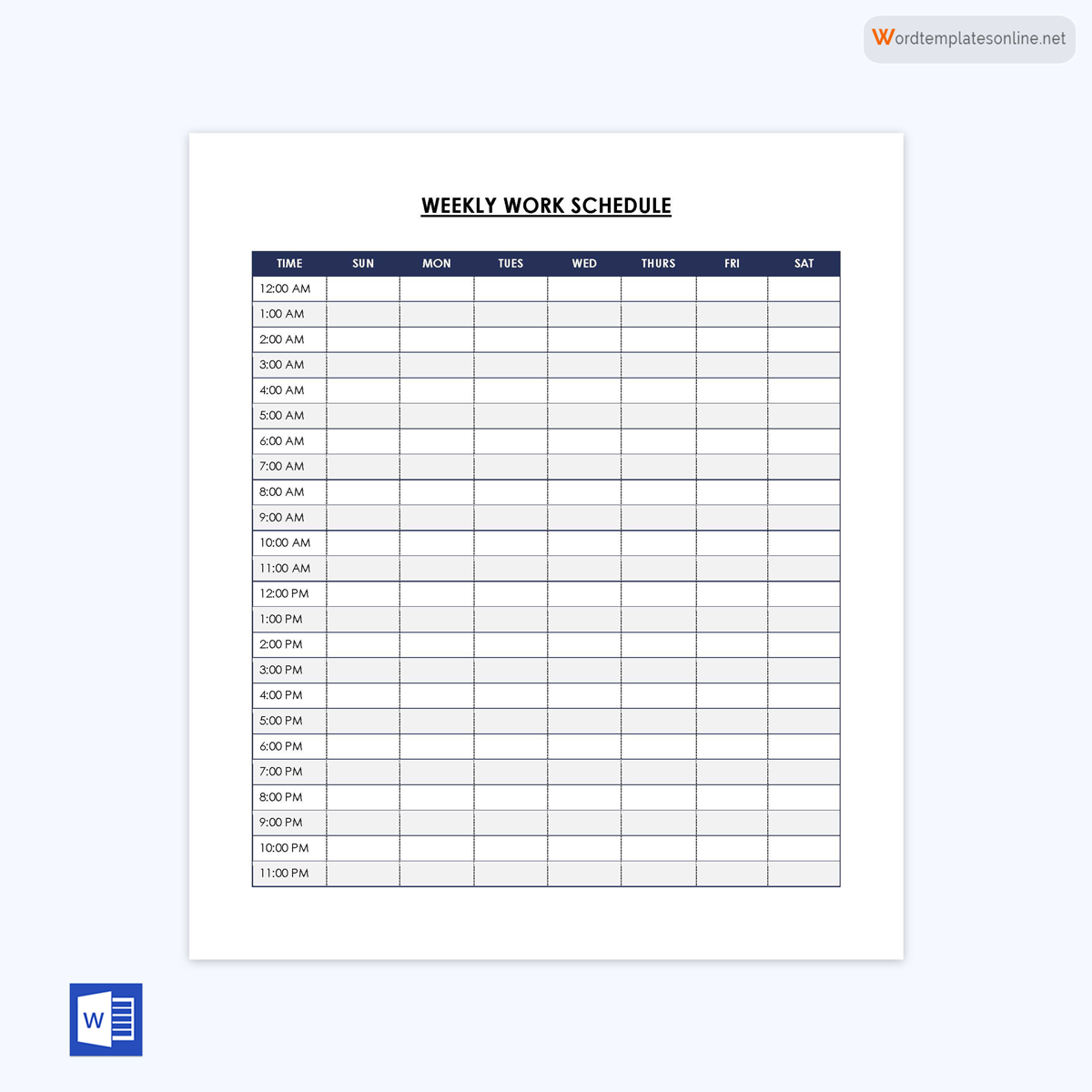
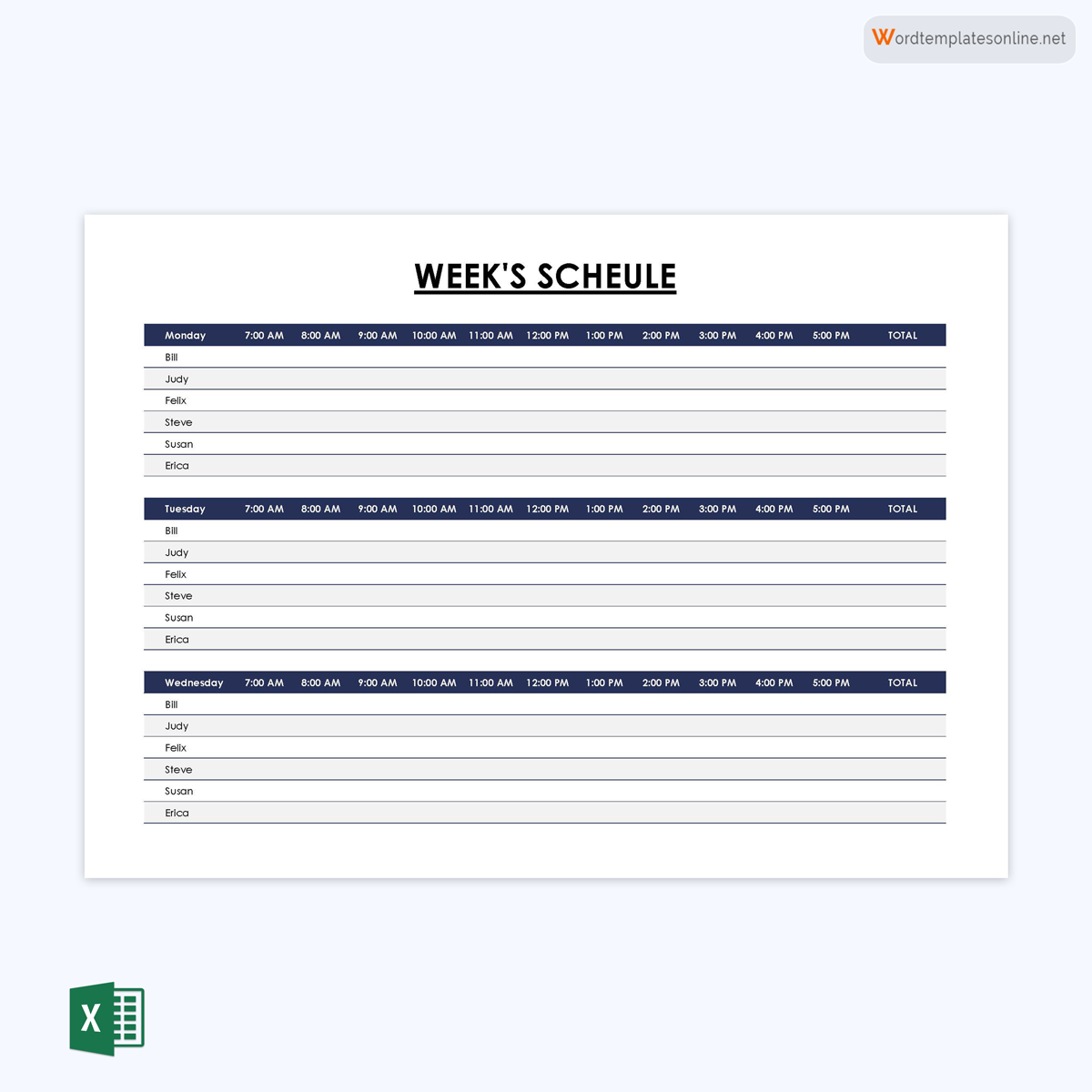
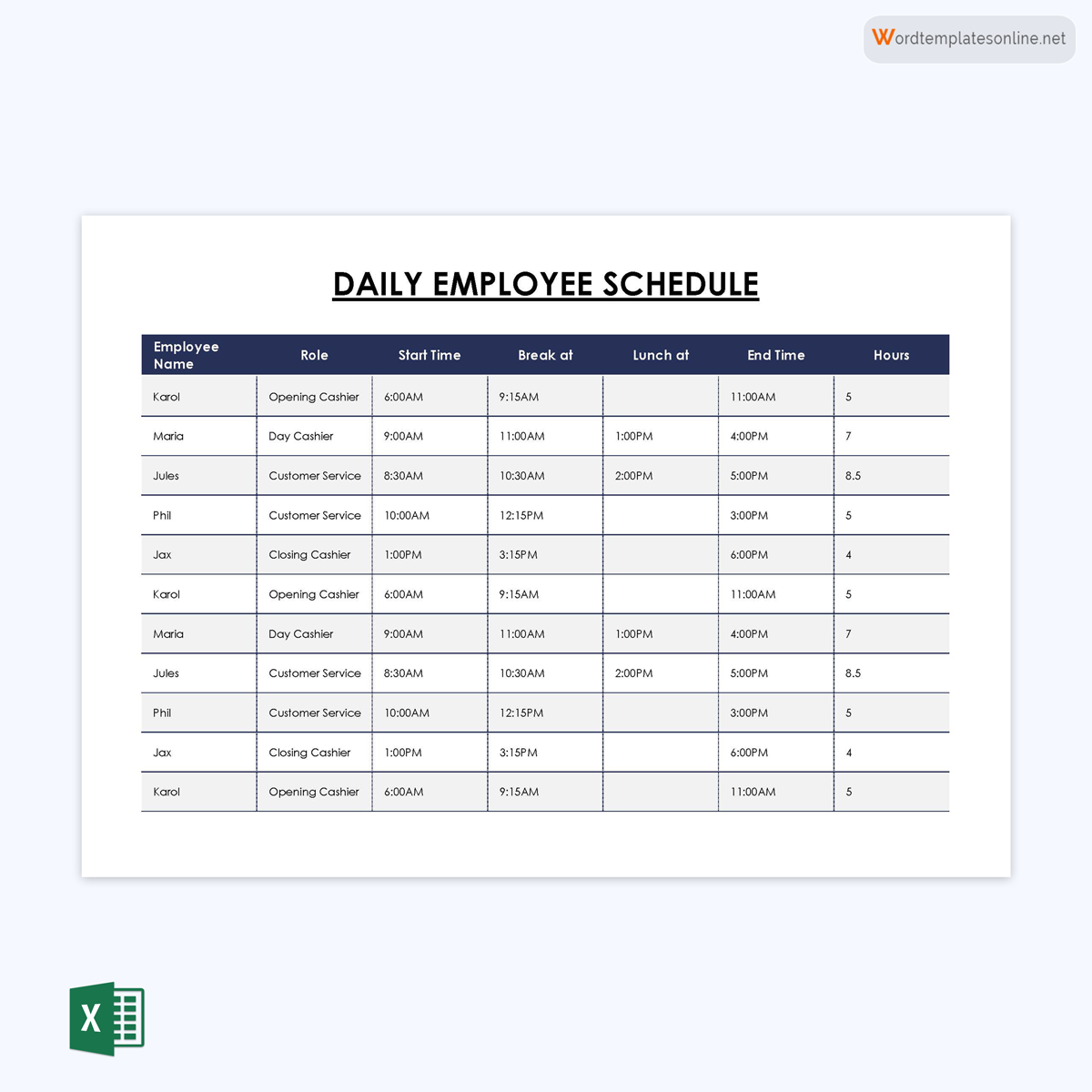

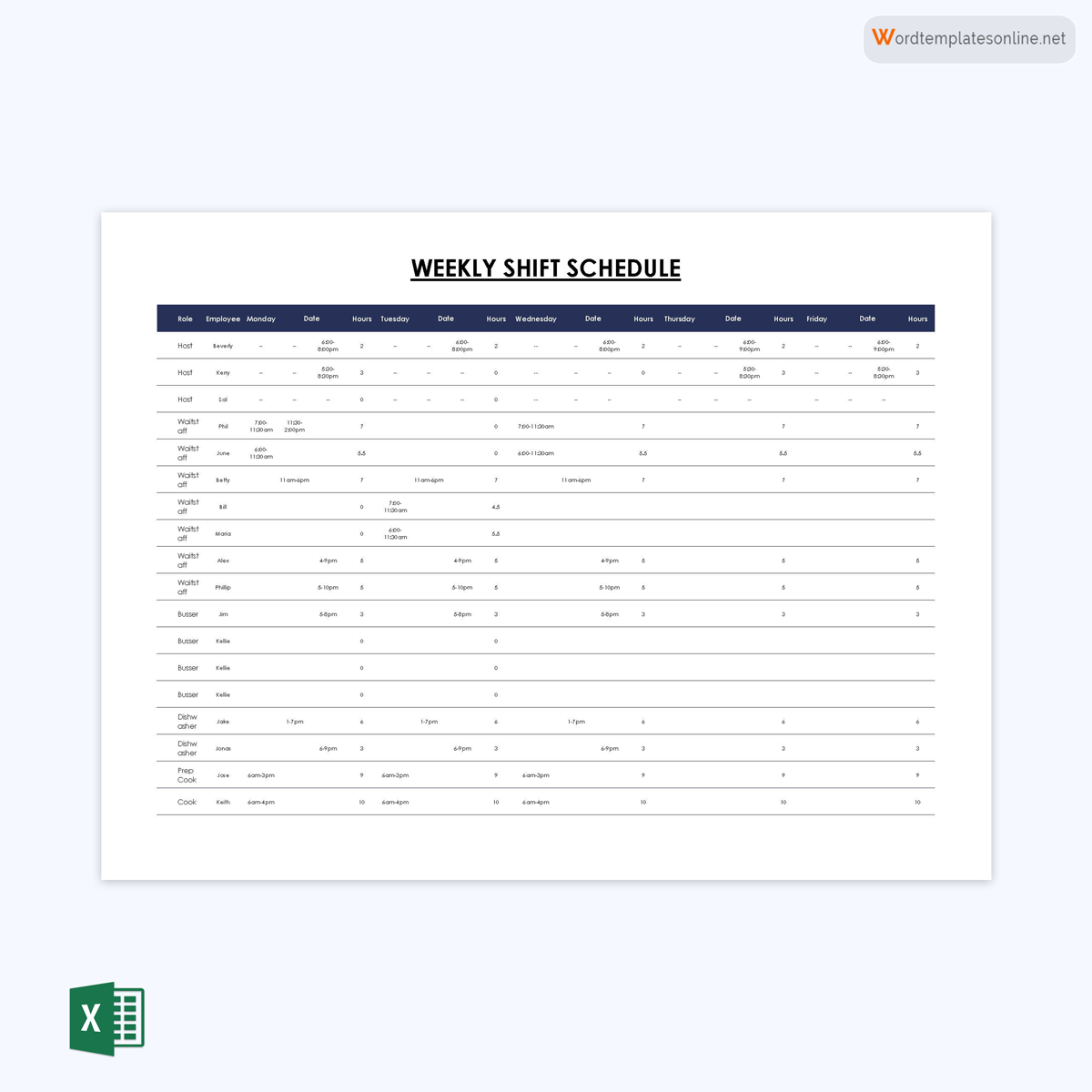
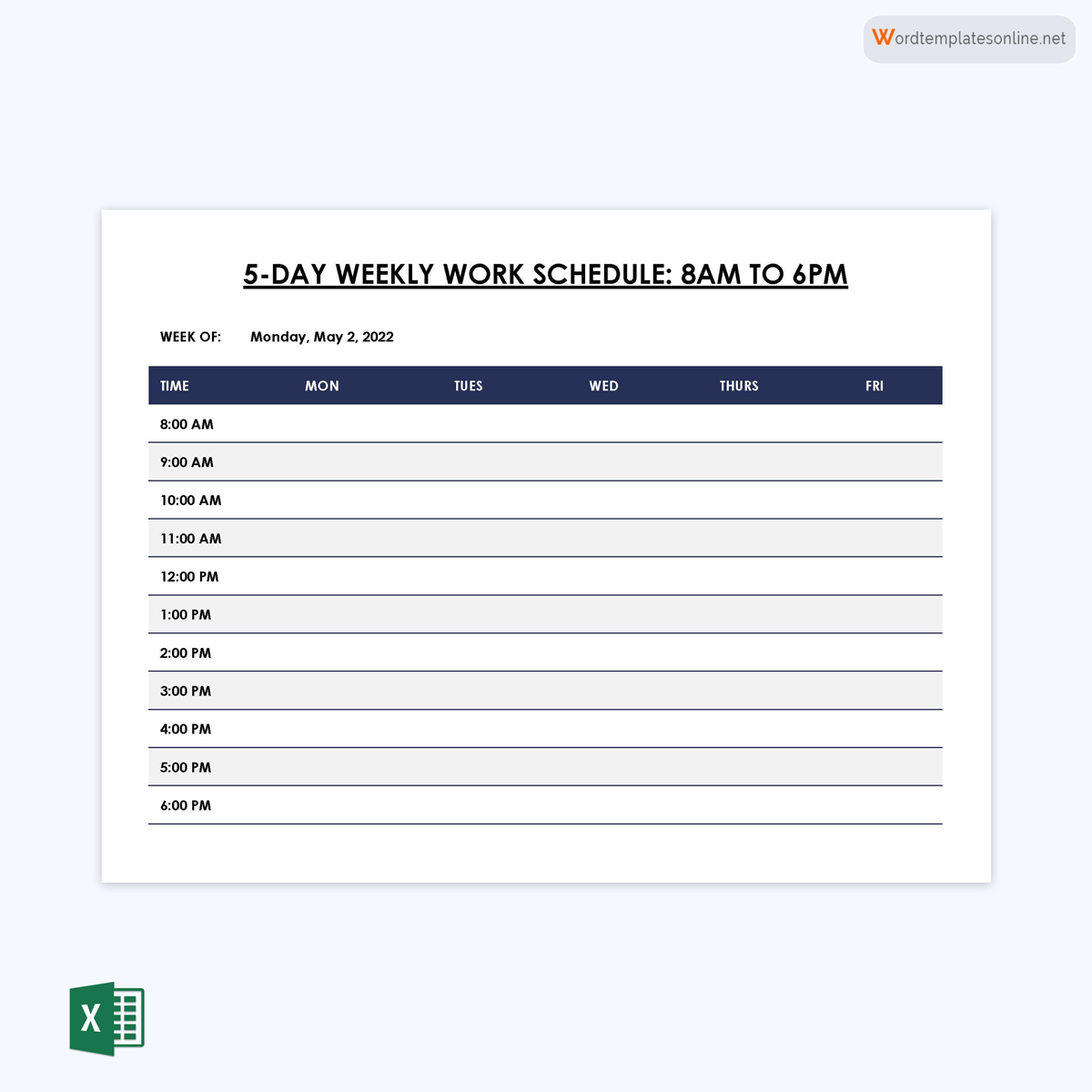
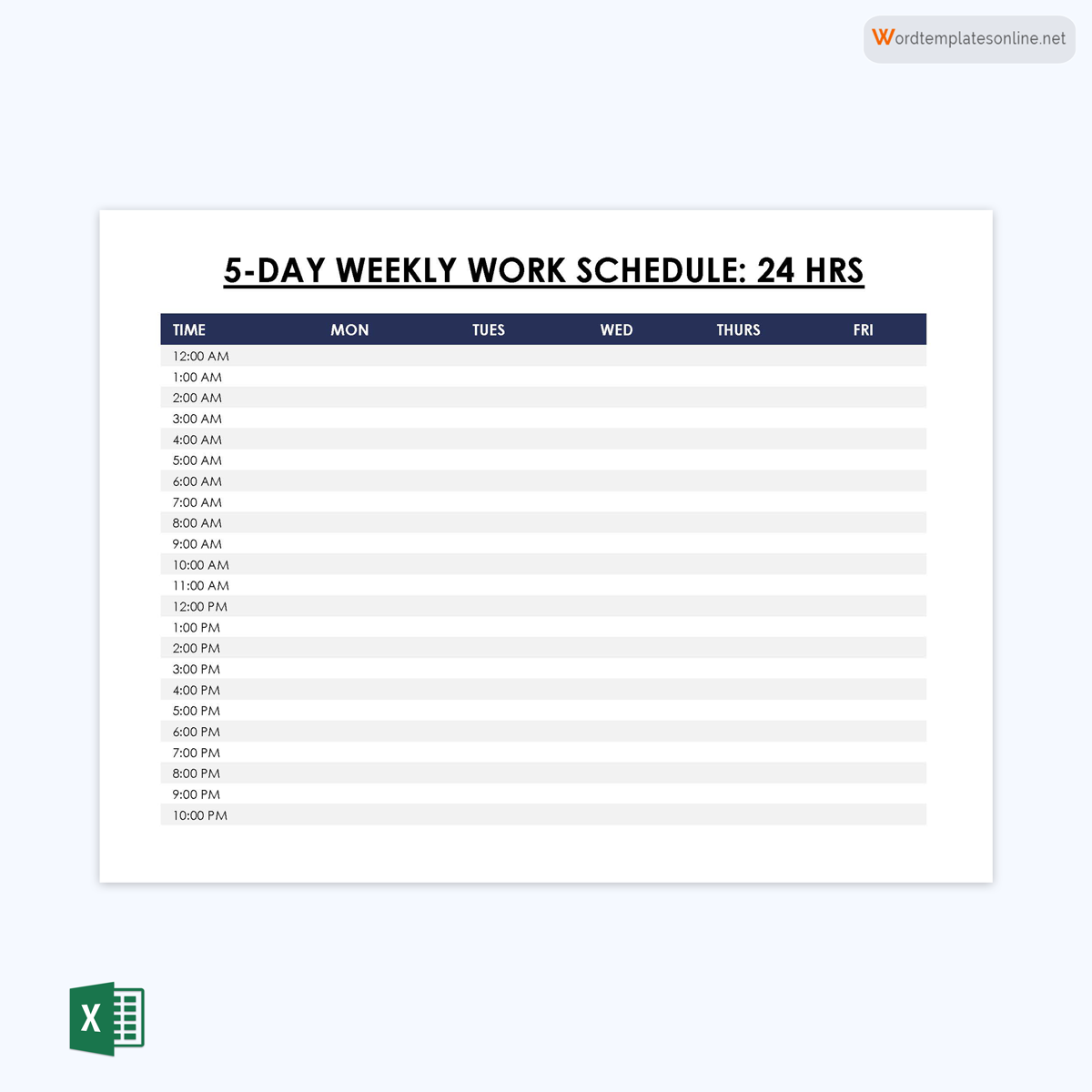

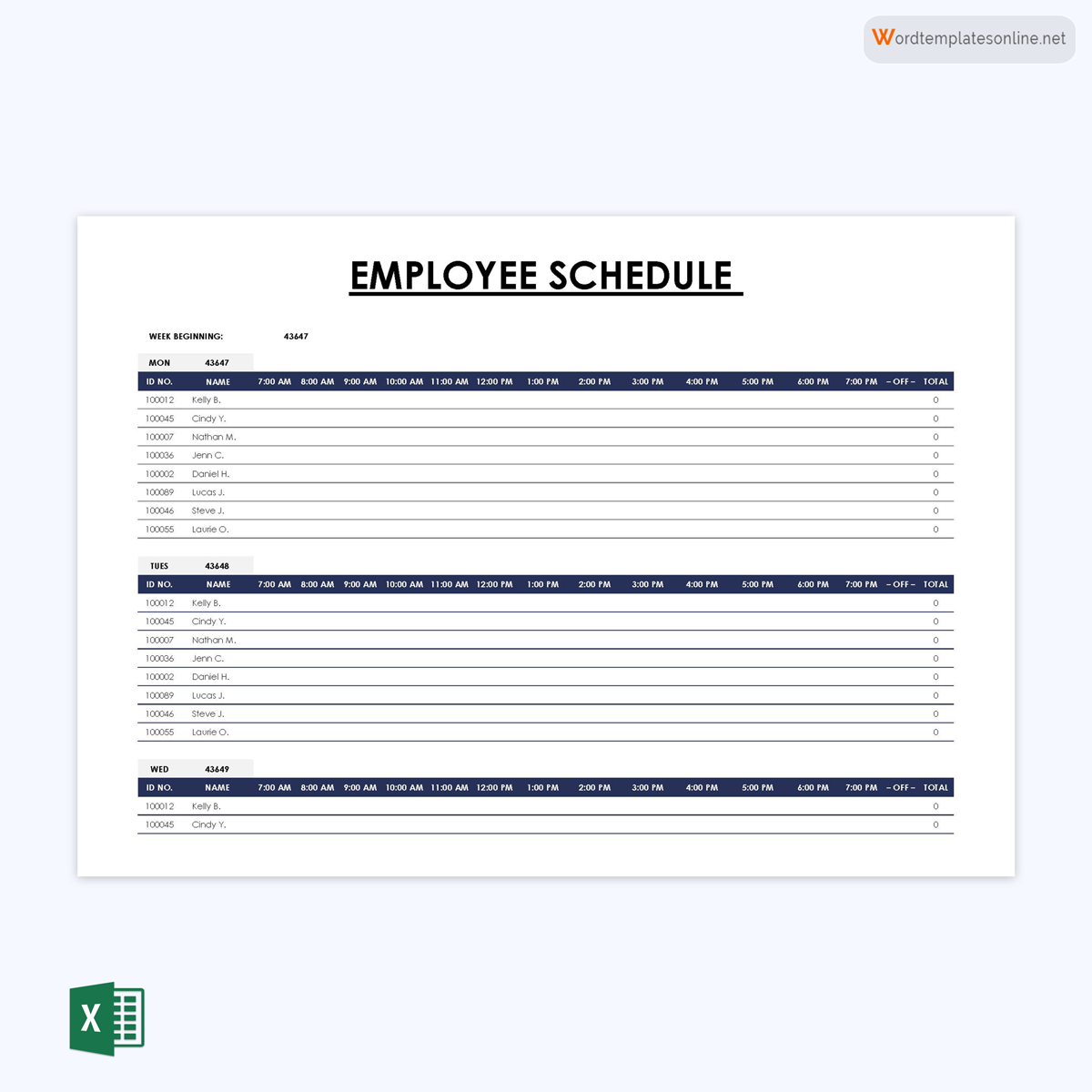
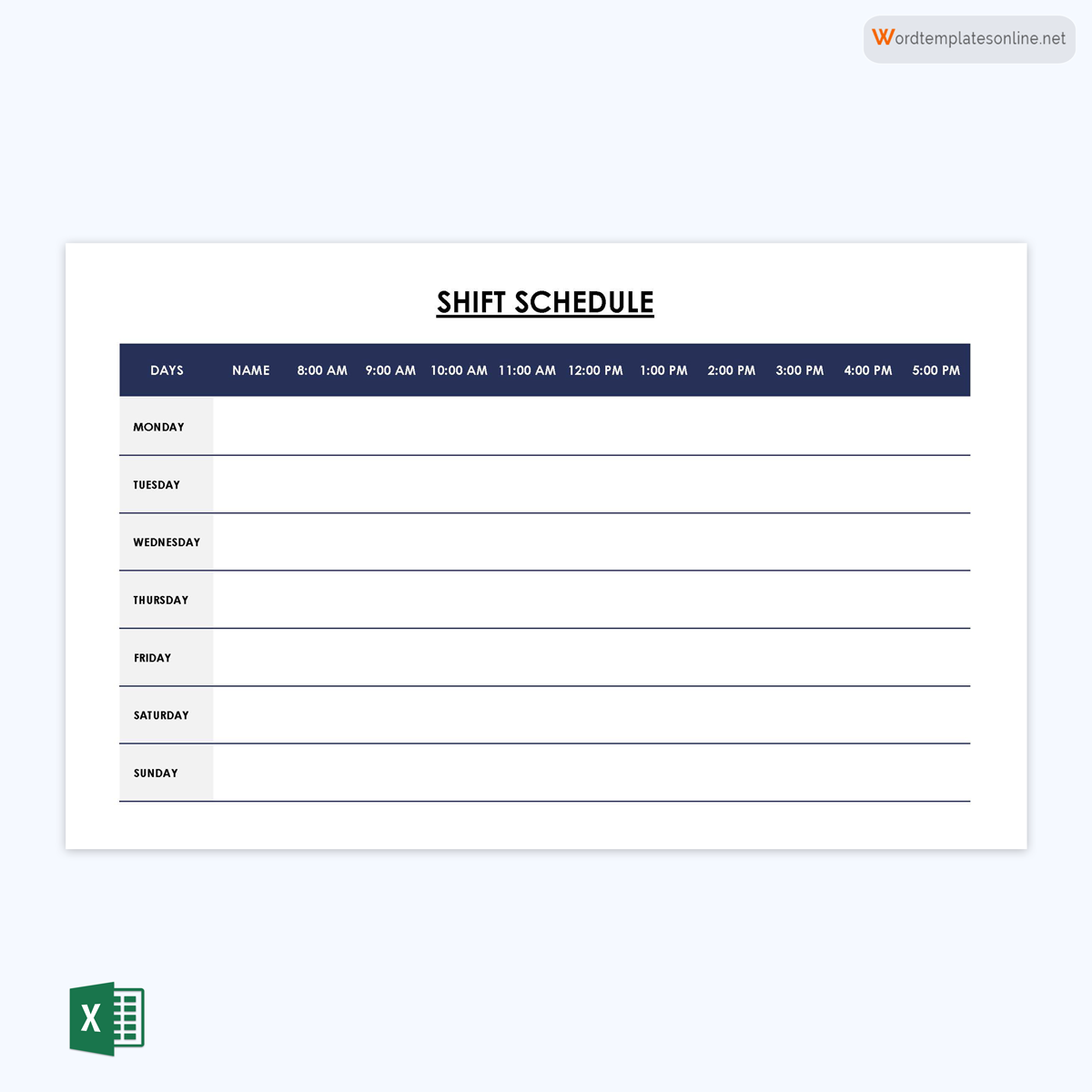



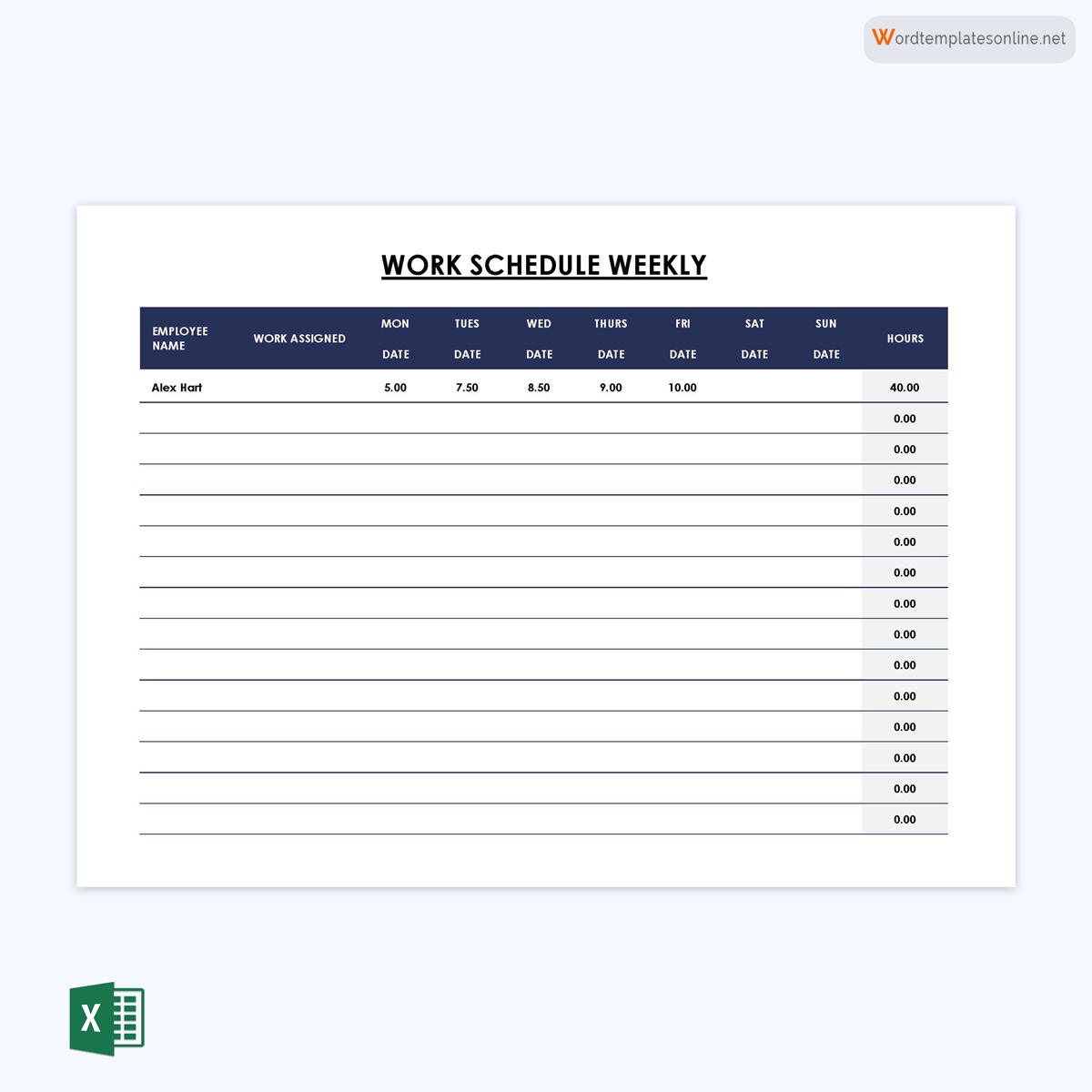
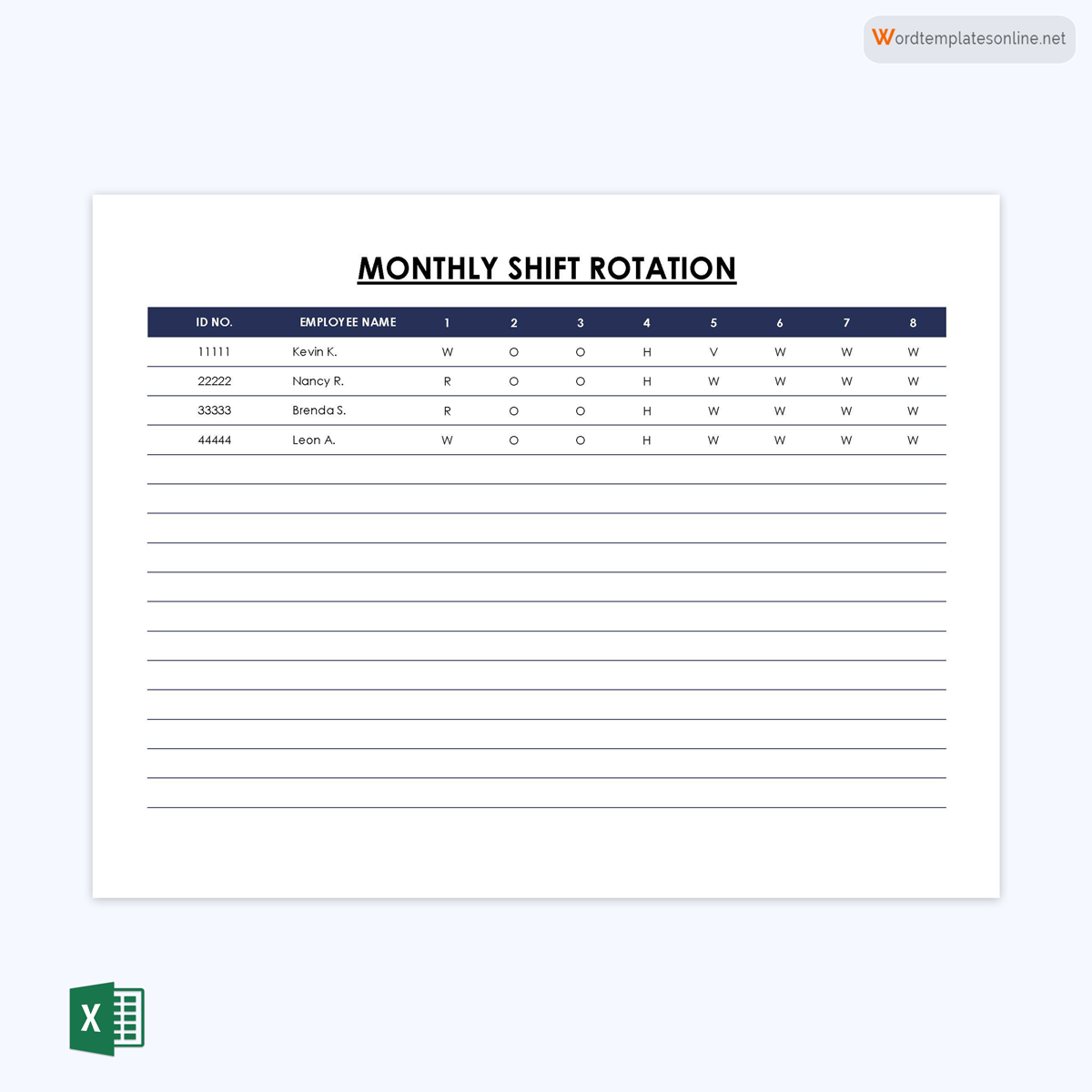
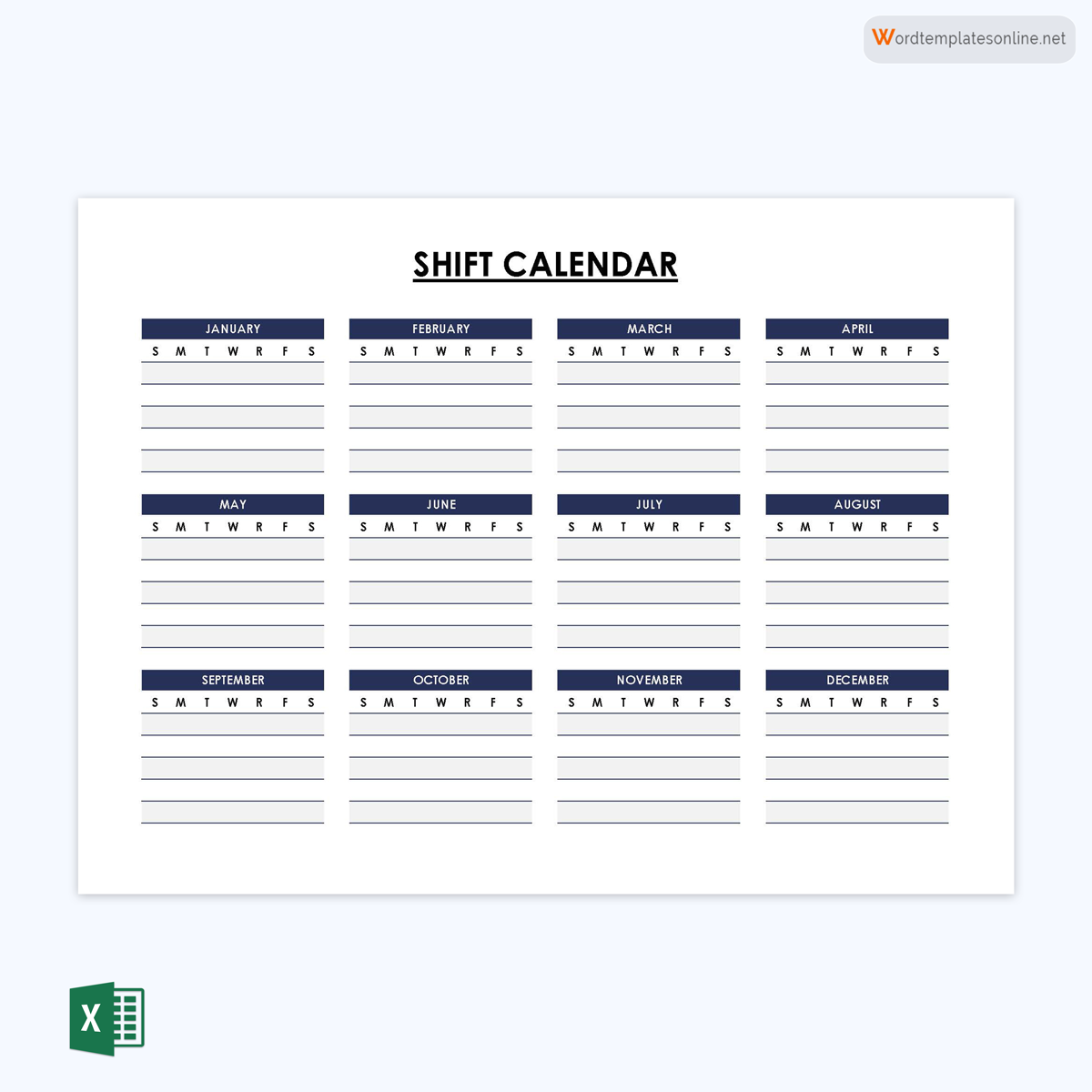
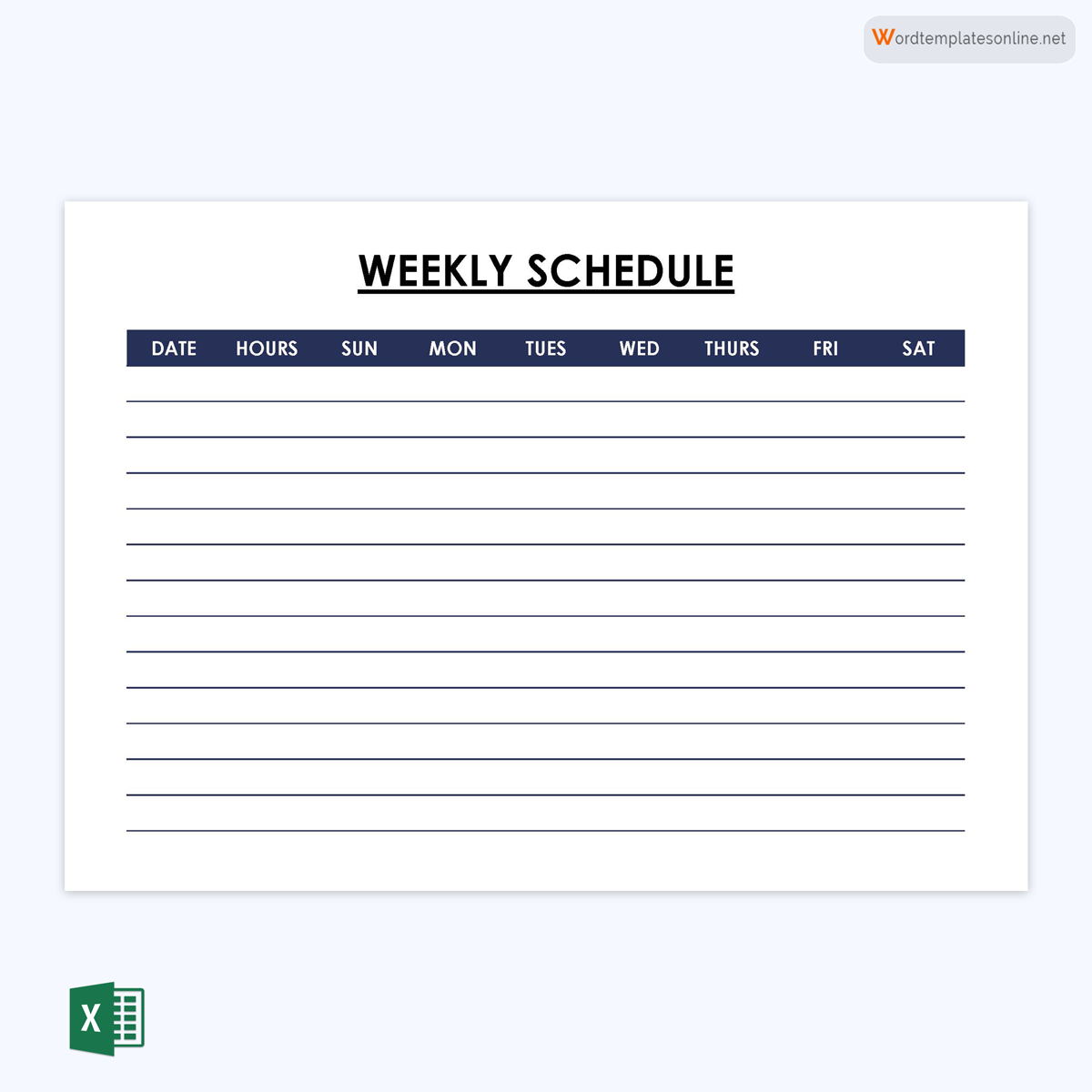

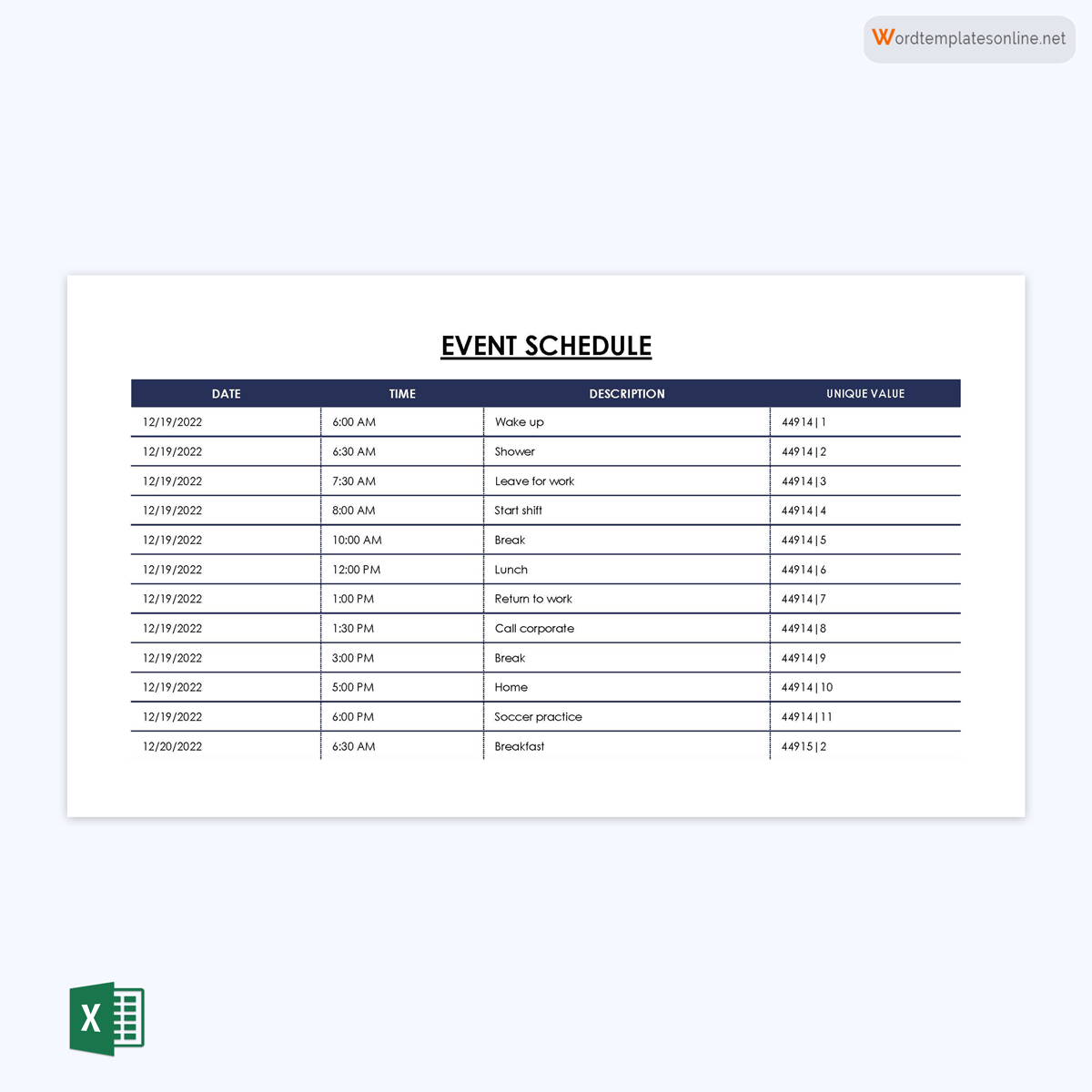
Best Practices
Work schedules are essential for any business that wants to achieve its objectives. Here are some excellent practices to help you create an effective one:
Ask for feedback
To improve the schedule, employers should ask employees for feedback. This will help to locate any problems with the current schedule and make necessary adjustments.
Define rules
Scheduling rules are essential for productivity and job satisfaction. Therefore, you should determine the rules and regulations that must be adhered to in the workplace. For example, when people will have breaks and how long they will work on specific tasks.
Define clear expectations when hiring
When hiring for a position, it is essential to have clear expectations. This will help to avoid potential conflicts between the employee and the employer. It is also essential to be clear about when tasks are due, working hours, provisions for time off, etc.
Get the schedule out quickly
Your employees need some time to adapt to your work schedule. Additionally, you have to plan sufficient time to resolve any conflicts that may arise about it and related changes. Therefore, it is essential to publish the schedule as soon as possible.
Get employees to do some scheduling
If you allow your employees to do some scheduling, they will feel more invested in the company and, therefore, more likely to perform better. They can also be more involved in setting schedules for other projects around the business.
Let employees find their substitute
The modern workplace is dynamic, and with that comes a need for flexibility. Therefore, businesses need a system that allows employees to find substitutes. This will reduce your workload, as an employee can get cover for their shift if they are not available.
Create an availability chart
An availability chart ensures you use your employees’ time efficiently. By plotting the hours that employees are available for work, you can identify any gaps in coverage and make necessary changes to your work schedule. An availability chart also reduces stress when a last-minute substitute is needed.
Have a backup
You should not rely on just one schedule. Instead, ensure that you have a backup in place. This will help to ensure that if anything goes wrong with your primary plan, you will still be able to manage the situation.
Frequently Asked Questions
There are various types of software programs that can help with scheduling, such as Microsoft Project, Simply Timesheets, etc. You can also use a calendar to set and update your schedule; this way, you can see what each day looks like and what tasks need to be completed on that day. You can also use our website’s reliable templates to set and update it.
You can consider factors such as the type of business you are operating and your employees’ needs. If you run a small business and have a team of people working together, it would make sense to have one schedule to cater to all your employees. Alternatively, if you have many part-time staff members, it may be more beneficial to divide it into different schedules.
Yes. Assigning someone to manage the shifts and schedule is a great way to manage, as it will lessen your workload. You can hire a person to do this, or if you have multiple business managers or directors, they can take turns managing these.
Introducing a drastic schedule gradually so your employees do not become overwhelmed is a good idea. In addition, make them aware of the changes before they take place so that they know what needs to be done and can work towards fulfilling the upcoming tasks.




